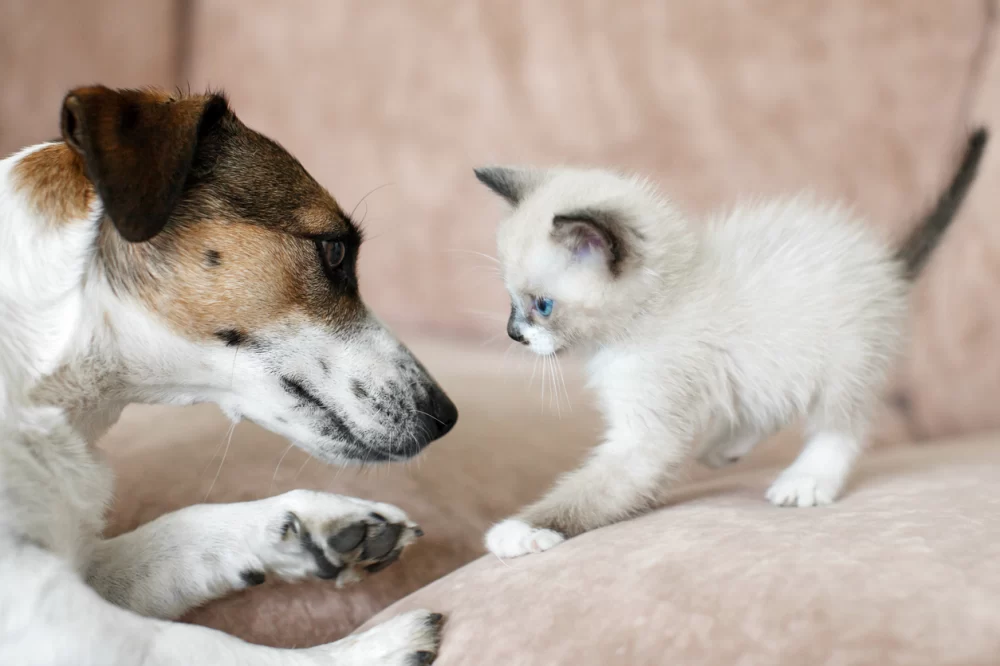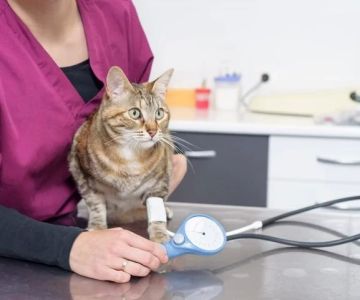- 1-Preparation-Before-Introduction
- 2-Initial-Introduction-Tips
- 3-Managing-Behavior-After-Introduction
- 4-Real-Life-Examples
- 5-Professional-Advice-and-Resources
1. Preparation Before Introduction
Introducing a new dog to your cat is a delicate process that requires careful preparation to ensure both pets feel safe and comfortable. Before bringing the dog home, start by gathering as much information as possible about your new dog’s temperament and energy level. This helps you anticipate how your cat might react.
It’s important to set up separate safe spaces for both pets. Your cat should have high perches or rooms where the dog cannot access, allowing them to observe the newcomer at their own pace. Meanwhile, prepare a confined area for the dog where it can stay initially without overwhelming your cat.
Another key step is to familiarize your cat with the dog’s scent before they meet face-to-face. You can swap bedding or gently rub a cloth on each animal and then place it near the other. This scent exchange helps reduce anxiety and builds familiarity gradually.

8525 Baltimore National Pike Suite E, Ellicott City, MD 21043, USA
See Details1.1 Understanding Pet Personalities
Not all dogs and cats are equally social or tolerant. Knowing your cat’s personality—whether shy, curious, or territorial—can guide the introduction strategy. Similarly, if the dog is high-energy or prey-driven, extra caution and slower introduction phases will be necessary.
1.2 Preparing Household Members
Everyone in the household should understand the plan and be ready to supervise the initial meetings. Calm and patient behavior from humans sets a positive tone and prevents adding stress to the pets during this transition.
2. Initial Introduction Tips
The first meeting between a dog and a cat is crucial and should be handled with care. Begin with controlled, on-leash introductions where the dog can’t chase or overwhelm the cat. Let the cat approach at its own pace and avoid forcing interactions.
Keep sessions short and positive. Reward calm behavior from both animals with treats and praise. Use barriers like baby gates or screen doors to allow safe visual contact before any physical interaction.
2.1 Reading Body Language
Watch for signs of stress such as growling, hissing, raised fur, or stiff posture in your cat, and excessive barking or lunging from the dog. Intervene early if either pet shows distress to avoid negative associations.
2.2 Gradual Increase of Interaction Time
As both pets become more comfortable, slowly increase the duration of their time together. Always supervise closely and be ready to separate them if tensions rise.
3. Managing Behavior After Introduction
Even after successful introductions, ongoing management is key to nurturing a peaceful relationship. Maintain separate feeding areas to prevent resource guarding. Continue to give your cat plenty of escape routes and resting spots.
Positive reinforcement remains important. Praise and reward both pets for calm, friendly interactions. If conflicts arise, redirect attention with toys or distractions rather than punishment.
3.1 Establishing Routine and Territory
Pets thrive on routine. Keeping consistent feeding, play, and rest schedules helps reduce anxiety. Make sure both pets have their own territories respected by the other to minimize territorial disputes.
3.2 Patience and Long-Term Commitment
Some dogs and cats become fast friends, while others may take weeks or months to coexist peacefully. Patience and ongoing effort from owners are essential to build a trusting and stress-free environment.
4. Real-Life Examples
Consider the story of Emily, who adopted a lively Labrador retriever named Max. Emily’s shy cat, Luna, initially hid for days. By using scent swapping and controlled meetings behind baby gates, Luna gradually grew curious about Max. Within a month, Luna would even initiate gentle nose touches with Max. This success came from patience, consistent positive reinforcement, and respecting Luna’s need for safe spaces.
Another example comes from a veterinary client at Hidden Brook Veterinary, where a new dog introduction was complicated by a cat with anxiety. The veterinary team recommended a phased approach combined with calming pheromone diffusers and behavioral support. Over two months, the dog and cat learned to tolerate each other’s presence peacefully.
5. Professional Advice and Resources
When in doubt, consulting professionals can make a huge difference. Hidden Brook Veterinary offers tailored advice on managing multi-pet households and can recommend products such as calming aids, safe barriers, and training tools to help your pets adjust.
Veterinarians and animal behaviorists can also assess your pets’ temperaments and design step-by-step introduction plans. This personalized guidance helps avoid setbacks and promotes a harmonious home environment.
Additionally, exploring community support groups or online forums where pet owners share their experiences can provide emotional support and practical tips.











